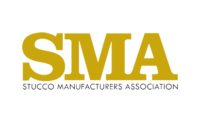The new silica rule has been in full force and it appears it is not going away soon. In late 2017, the construction industry filed several objections to the new OSHA silica ruling. On December 22, 2017, the Federal Court of Appeals rejected all five objections filed by the industry. This means the ruling is not going away any time soon. Another issue is that some believe it will either not impact them or that they are in some way exempt.
While OSHA currently may not be focused on drywall or plaster, the fact that they are both listed on their website should make employers pay heed. OSHA may be first focusing on the tasks listed in Table One first. As the executive director for one of those Table One industries, they are visiting sites and verifying for compliance.
Do Your Research
While masonry, concrete and cement are heavy users of silica, many products we use contain crystalline silica. Considering the permissible exposure limit is about the size of President Lincoln’s forehead on a penny, it does not take much to be in violation of the ruling. I recommend you spend a little time looking up the issue at Silica-Safe.org, have SDS papers on all materials used ready and prepare your supervisors.
Since the rule requires all construction companies that work with silica to have a written exposure plan and assign a competent person, you must prepare. The Stucco Manufacturers Association has completed three CP training classes to better prepare employers and more are scheduled around the U.S. Upon completion of the class and passing a written exam, the attendees receive a laminated card verifying they have passed a comprehensive exam on silica. More than 250 cards have been issued and on the real-life occasions where OSHA has been on site, the card was helpful in verifying compliance to the ruling.
Don’t Assume Things
Some believe their task or trade is exempt from the OSHA ruling. There is nothing in the rule that exempts any trade that works with silica. The PEL is 50 micrograms per cubic meter of air in an 8-hour time weighted average. Historical testing of cement mortar mixing is around that magic 50 number. However, it is not the 50 number that allows you to ignore controls.
If the Compliance Safety and Health Officer comes onto your site, they have a clear directive to follow from the Department of Labor. They have flow chart A that starts with the question: Is the task part of Table One? If the answer is “yes,” they verify your firm is following Table One prescribed directives; if the answer is “no,” they are directed to go to Table B. Table B starts with the question: is the task creating silica dust exposure that could exceed the Action Level. This level is 25 micrograms and half the PEL. If the CSHO has reason to suspect you are exceeding the AL and you have no monitoring or objective data to support what you are or are not doing. They will begin testing the air themselves.
In the Works
The Stucco Manufacturers Association’s Silica Compliance Program has been in the works for well over a year with consultation from some of the nation’s best and most noted experts on silica exposure. While the SMA and other groups can provide the required written exposure plans and training, employers are allowed to write their own plan and conduct their own in-house training for Competent Persons. Silica-Safe.org, the OSHA site, provides a template to follow. It should be noted that mixing of mortar is not a task listed on Table One, so if you mix mortar and decide to write your plan, you should be prepared to monitor your workers and have that data ready for the CSHO inspection.
The State of California has already put out a paper showing tasks they are concerned about, and mixing cement is on the list. This may be in part because they also reference a Washington State study from 2003 on various construction tasks in which mixing cement was right on that magic number of 50. However, it was not a concern in 2003 as the level was 100 then and there was no established Action Level in place.
You may get lucky and the CSHO walks by your mortar mixing crew without batting an eye. However, wouldn’t having a plan, the data and a trained CP to verify the PEL was not violated be a better tactic? There are resources out there; the SMA is just one of them. Maybe adhering to the Scout motto that has been used 1907 is in order, “Be Prepared.”





Report Abusive Comment